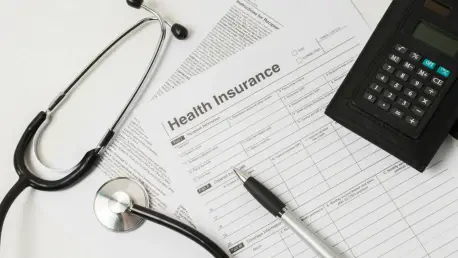In Pennsylvania, a pressing crisis looms over the healthcare landscape as federal cuts tied to legislation from the Trump administration threaten to strip Medicaid coverage from an estimated 300,000 residents, highlighting the profound impact of a federal tax and spending bill that slashes health funding. This staggering figure puts access to critical care at risk for many who rely on this essential program. The situation is compounded by a startling lack of awareness among recipients, many of whom don’t even realize they are enrolled in Medicaid due to the state’s complex system of branding and distribution through private entities. As the clock ticks toward significant policy shifts, including new eligibility rules, the ripple effects are poised to strain not just individuals but the entire healthcare infrastructure of the state. This unfolding challenge demands attention to the scale of the cuts, the barriers to communication, and the urgent efforts underway to mitigate the fallout.
Federal Cuts and Their Impact
The Scale of the Threat
A massive reduction in federal Medicaid funding, projected to total $1 trillion over the next decade, lies at the heart of the crisis facing Pennsylvania, and it poses a significant threat to healthcare access. According to estimates from the Congressional Budget Office, this drastic cut could result in 12 million Americans losing insurance coverage by 2034, with Pennsylvania bearing a heavy burden as approximately 300,000 residents stand to lose their benefits. These cuts are not merely numbers on a page but represent a seismic shift in national health policy that prioritizes fiscal reductions over access to care. For many in the state, Medicaid is a lifeline, covering essential medical services for low-income families, the elderly, and those with disabilities. The looming threat of losing this support raises serious concerns about how individuals will manage chronic conditions or afford emergency care without assistance.
Beyond the immediate impact on individuals, the federal cuts signal a broader challenge for state budgets already stretched thin, and Pennsylvania’s share of the national coverage loss translates into a significant local crisis. The state grapples with how to support its most vulnerable populations amidst shrinking resources. Hospitals and clinics, often the last line of defense for the uninsured, may see a surge in demand for uncompensated care, further straining their finances. This policy shift, rooted in legislation from years past, has set the stage for a public health emergency that could redefine access to care in the state. Lawmakers and health officials now face the daunting task of preparing for a future where federal support is drastically reduced, leaving many to wonder how the gaps in coverage will be filled.
National Implications and Local Realities
The national scope of Medicaid cuts paints a grim picture, but the local realities in Pennsylvania bring the human cost into sharp focus, highlighting the severe impact on vulnerable populations. With 300,000 residents at risk, entire communities could see their access to healthcare diminish, particularly in rural areas where medical resources are already scarce. The projected loss of coverage is part of a larger trend of federal health spending reductions that prioritize budgetary goals over social safety nets. This shift threatens to undo years of progress in expanding healthcare access, leaving states like Pennsylvania to shoulder the burden of finding alternative solutions. The sheer scale of the potential loss underscores the urgency of addressing this issue before it spirals into a full-blown crisis.
Moreover, the impact of these cuts extends to the economic stability of the state, as healthcare access is closely tied to workforce participation and productivity. Families losing Medicaid may face impossible choices between medical bills and basic necessities, potentially driving up poverty rates. Urban centers and small towns alike are bracing for the fallout, with local leaders sounding the alarm about the need for immediate action. The federal policy driving these changes has sparked heated debate, but for Pennsylvanians, the focus remains on the tangible consequences of diminished support. As the timeline for these cuts approaches, the state must navigate uncharted territory to protect its residents from the worst outcomes of this national policy shift.
Recipient Awareness Challenges
Addressing the challenges of recipient awareness requires a comprehensive strategy that includes education, communication, and engagement to ensure that individuals understand the importance of the information or resources being provided to them. Overcoming these challenges is critical for the success of any initiative aimed at improving awareness and participation.
Confusion Over Coverage
One of the most significant barriers to addressing the Medicaid crisis in Pennsylvania is the widespread confusion among recipients about their coverage status, compounded by the state’s unique terminology and structure. Many individuals are unaware they are enrolled in Medicaid because the state refers to the program as “medical assistance” and distributes benefits through private managed care organizations. These entities, with familiar names like Geisinger Health Plan and Keystone First, issue insurance cards that resemble commercial plans, obscuring the public funding behind them. This setup, while intended to streamline delivery, has led to a disconnect where countless residents do not recognize their reliance on a program now under threat. The lack of clarity poses a critical challenge as federal cuts loom, leaving many unprepared for potential changes.
Adding to the complexity is a historical effort to reduce the stigma associated with public benefits by encouraging recipients to identify their coverage by the name of the managed care organization rather than as Medicaid. While well-intentioned, this approach has deepened the misunderstanding, with nearly 97% of Pennsylvanians on publicly funded healthcare receiving it through these private entities. As a result, individuals often believe they hold private insurance, unaware of the federal and state policies that could disrupt their access to care. This confusion complicates efforts to inform people about impending cuts, as the very foundation of their understanding is misaligned with the reality of their coverage. State officials now face the uphill task of bridging this knowledge gap before it’s too late.
Communication Barriers and Public Perception
The challenge of recipient unawareness is further exacerbated by systemic communication barriers that hinder effective outreach, particularly in underserved or rural communities across Pennsylvania. Many Pennsylvanians lack access to reliable information channels, making it difficult for state agencies to deliver critical updates about Medicaid changes. The use of alternate program names and the involvement of private organizations mean that standard messaging often fails to resonate with those who need it most. This disconnect is especially problematic for vulnerable groups, such as the elderly or those with limited technological proficiency, who may not engage with digital or mailed notifications. Without targeted strategies to reach these populations, the risk of widespread coverage loss grows even greater.
Public perception plays a pivotal role in the awareness crisis, as historical destigmatization campaigns have inadvertently muddled the understanding of Medicaid’s role. While these efforts aimed to normalize public assistance by aligning it with private insurance branding, they have created a scenario where many fail to grasp the gravity of federal policy shifts. Personal stories, such as those of individuals discovering their Medicaid enrollment only when faced with potential loss, highlight the emotional toll of this confusion. The state must now rethink how to communicate effectively, ensuring that messages cut through the noise of misperception to prepare residents for what lies ahead. Without a clear and accessible approach, the gap between policy and public understanding will only widen.
New Eligibility Rules
Work Requirements and Barriers
Compounding the threat of federal cuts are new Medicaid eligibility rules set to take effect in January 2027, introducing a significant hurdle for many Pennsylvanians. Under these regulations, recipients will be required to demonstrate they work at least 80 hours per month to maintain coverage, a mandate that could exclude countless individuals unable to meet or navigate these demands. This policy shift is particularly concerning for vulnerable populations, including the elderly, those with mental health challenges, and individuals with physical disabilities, who may find compliance impossible. The administrative burden of proving work hours adds another layer of difficulty, especially for those unfamiliar with bureaucratic processes or lacking access to necessary documentation.
The potential impact of these work requirements cannot be overstated, as they threaten to accelerate coverage loss across the state. For many, the challenge lies not only in meeting the hourly threshold but also in understanding and fulfilling the reporting obligations tied to it. Rural residents, who often face limited job opportunities, and urban dwellers with unstable employment may be disproportionately affected. Health advocates warn that without robust support systems to assist with compliance, the new rules could lead to a sharp increase in uninsured individuals. As the implementation date approaches, the state must prioritize resources to help recipients navigate this complex landscape, lest the policy become a catalyst for widespread disenrollment.
Vulnerable Populations at Greatest Risk
Focusing on the human impact of the new eligibility rules reveals a stark reality for Pennsylvania’s most vulnerable populations, particularly the elderly and those with health challenges. The elderly, often on fixed incomes or unable to work due to health constraints, face a heightened risk of losing Medicaid coverage under the 80-hour work mandate. Similarly, individuals with mental health issues or chronic illnesses may struggle to meet the requirements or even engage with the administrative steps needed to prove their status. These groups, already reliant on consistent medical care, could see their health deteriorate rapidly without access to essential services, exacerbating existing disparities in healthcare outcomes.
Additionally, the technological and logistical barriers tied to the new rules pose unique challenges for those with limited resources, especially since many lack reliable internet access or the skills to submit required documentation online, while others may not have the means to travel to in-person assistance centers. Pediatricians and long-term care providers have raised alarms about the potential fallout, noting that children and dependents could suffer indirectly if primary caregivers lose coverage. The state must address these inequities by tailoring support to the needs of at-risk groups, ensuring that the implementation of work requirements does not disproportionately harm those least equipped to adapt. Without such measures, the policy risks deepening the healthcare crisis for Pennsylvania’s most fragile communities.
Systemic Strain on Healthcare
Hospitals and State Budgets Under Pressure
The ripple effects of Medicaid cuts and eligibility changes extend far beyond individual recipients, placing immense pressure on Pennsylvania’s healthcare infrastructure. Hospitals, many of which are already grappling with financial difficulties and closures, face the prospect of providing more uncompensated care as coverage losses mount. This burden threatens to push already strained facilities to the brink, particularly in underserved areas where alternative funding sources are scarce. The potential surge in uninsured patients could lead to longer wait times, reduced service quality, and even further closures, undermining the state’s ability to meet public health needs.
At the state level, the rising costs of caring for an aging and increasingly ill population add another dimension of strain to an already overstretched Medicaid program. With federal funding set to decline, Pennsylvania’s budget must somehow absorb the shortfall, a task made more daunting by competing priorities in education and infrastructure. Lawmakers are caught in a bind, forced to balance fiscal responsibility with the urgent need to protect vulnerable residents. The financial implications of uncompensated care and reduced federal support paint a troubling picture, signaling a healthcare system nearing its breaking point. Without innovative solutions or additional resources, the state risks a downward spiral in access and quality of care.
Long-Term Consequences for Public Health
Looking ahead, the long-term consequences of systemic strain on Pennsylvania’s healthcare system are deeply concerning, especially as hospitals absorb the cost of uncompensated care. Their ability to invest in new equipment, staff training, and facility upgrades diminishes, potentially compromising patient outcomes over time. Rural communities, already facing provider shortages, could see access to care erode further, forcing residents to travel long distances for basic services. This trend threatens to widen health disparities, with low-income and minority populations bearing the brunt of reduced resources and availability.
Moreover, the state’s struggle to fund Medicaid amidst federal cuts could lead to broader public health challenges, such as increased rates of preventable diseases and untreated chronic conditions. The economic impact of a less healthy workforce may also ripple through communities, affecting productivity and growth. Health experts caution that without proactive measures to shore up the system, Pennsylvania could face a future where healthcare access becomes a privilege rather than a right. Addressing these long-term risks requires a multifaceted approach, including federal advocacy for restored funding and local initiatives to bolster safety net programs. The stakes are high, and the time to act is now.
Efforts to Mitigate the Crisis
State and Legislative Actions
In response to the looming Medicaid crisis, Pennsylvania’s Department of Human Services is taking proactive steps to inform and support affected residents. By collaborating with private managed care organizations, the department is developing communication strategies, including message templates, to ensure recipients understand the impending changes to their coverage. This partnership aims to bridge the awareness gap, providing clear guidance on what steps individuals need to take to protect their benefits. The state has pledged ongoing support, recognizing that a one-time notification will not suffice given the complexity of the system and the diversity of recipient needs.
Parallel to these efforts, lawmakers such as State Representative Dan Frankel, chair of the House Health Committee, are pushing for legislative measures to enhance outreach and assist recipients in navigating new eligibility requirements. The proposed bills focus on expanding access to resources and simplifying administrative processes, particularly for those at risk of losing coverage due to work mandates. These initiatives reflect a growing recognition among state leaders that without robust intervention, the federal cuts could devastate Pennsylvania’s healthcare landscape. While these actions mark a critical starting point, their success hinges on effective implementation and the ability to reach every corner of the state.
Doubts About Effectiveness
Despite the state’s efforts to mitigate the Medicaid crisis, skepticism abounds among experts and advocates regarding the sufficiency of current measures, as they grapple with deeply entrenched confusion surrounding coverage. This confusion, fueled by alternate program names and private branding, poses a formidable barrier to effective communication. Many question whether standardized messages and templates can cut through the fog of misunderstanding, especially for hard-to-reach populations with limited access to information. The scale of the challenge—reaching 300,000 at-risk individuals—underscores the difficulty of ensuring no one slips through the cracks in a system already riddled with complexity.
Further doubts arise from the systemic barriers that go beyond mere messaging, including technological and logistical hurdles that disproportionately affect vulnerable groups. Advocates argue that without deeper reforms to simplify the Medicaid structure and address administrative burdens, outreach alone will fall short. Personal accounts of recipients only recently learning of their enrollment highlight the depth of the awareness crisis, fueling concerns that legislative and state actions may not keep pace with the urgency of the situation. As the deadline for new eligibility rules approaches, the consensus is that while efforts are underway, a more comprehensive overhaul may be necessary to prevent widespread coverage loss.
Looking Ahead: Strategies for Stability
Reflecting on the Medicaid crisis in Pennsylvania, it became evident that the threat of coverage loss for 300,000 residents demanded urgent and innovative responses. State officials and lawmakers have rallied to address the immediate challenges through enhanced communication and legislative support, striving to protect vulnerable populations from the fallout of federal cuts. Hospitals and healthcare providers have braced for the financial strain, highlighting the interconnected nature of individual access and systemic health.
Moving forward, actionable strategies must prioritize sustained outreach tailored to diverse communities, ensuring that every recipient understands their status and options. Investment in technology and in-person assistance could help overcome administrative barriers, particularly for those struggling with new work requirements. Advocacy at the federal level to reconsider funding reductions remains crucial, alongside local efforts to bolster safety net programs. By focusing on these next steps, Pennsylvania can build a more resilient healthcare framework, safeguarding access for future generations against similar policy upheavals.









